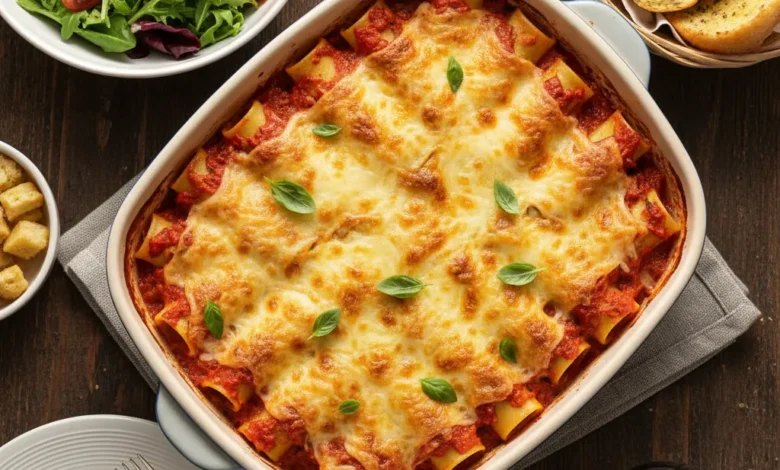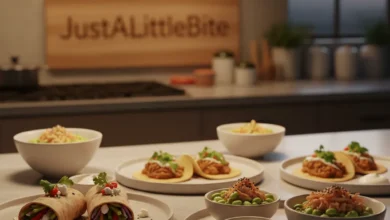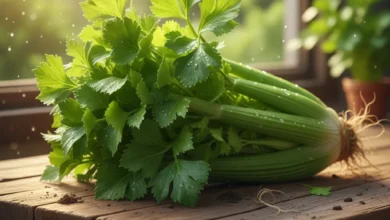Mannacote Memories: A Pasta Dish That Feels Like Home

Italian cuisine is something magical that transforms simple ingredients into an unforgettable meal. One such dish, which has been winning hearts over generations, is mannacote. Though, right now generally everyone thinks it is a misspelling of manicotti, people seem to endear mannacote while searching for that classic baked pasta. Rich and full of comfort, it has the makings of the kind of dish that brings families together at the dinner table or fills the house with joyous seasonal revelry. Whether it be an airy, creamy ricotta filling or a savory meat variation,it is a food for all seasons and for all tastes. In this guide, we would explore the history of the dish, authentic recipes, and useful cooking tips to help you enjoy the benefits of mannacote at home.
Table of contents
- The History of Mannacote
- Why Mannacote is Unique?
- How to Make Mannacote: Step-by-Step Guide
- Different Alternative Ways of Making Mannacote
- Mannacote Must-Have Key Ingredients
- Perfecting Your Mannacote
- Mannacote and Other Italian Pasta Dishes
- The Nutritional Value of Mannacote
- Mannacote for Special Celebrations
- Conclusion
- FAQs
The History of Mannacote
Mannacote, or manicotti, has been a quintessential part of Italian cuisine right from the start. Literally meaning “little sleeves,” the word “manicotti” designates the pasta tubes into which fillings may be stuffed. As the recipe came from Italian immigrants to the United States, it quickly became a favorite with families. Time saw the emergence of variations with respect to regions, from creamy cheese-only recipes to hearty ones filled with ground beef or sausage. Today, when one types in a script to search for mannacote, there are thoughts about recreating this classical dish right in the kitchen.
Why Mannacote is Unique?
Mannacote is superbly distinguished by having rich flavors along with simplicity. The tubular pasta forms the vessel for creamy, cheesy, or meaty stuffing that ends up lades under a covering of marinara sauce and melted cheese. The dish bakes into a golden, bubbling heart-throb. Unlike straightforward pasta, it gives a sense of different textures: soft pasta, tasty filling, and a well-baked topping crispy. It speaks comfort food, only dressed all up, so it can fit easily into casual suppers or serve at high-end events.
How to Make Mannacote: Step-by-Step Guide
Step 1: Prepare the Pasta
First, either buy dried manicotti shells in a store, or, if you really want to do it the right way, make sheets of fresh pasta. Then, boil the shells because they need to be slightly undercooked as they’ll continue cooking or baking in the oven.
Step 2: Choose Your Filling
Traditional fillings include ricotta cheese, mozzarella, Parmesan, and a variety of fresh herbs. Spinach, ground beef, or sausage may be added for a heartier flavor.
Step 3: Stuff the Pasta
Fill each shell carefully using a piping bag or spoon. They need to be full, but not overflowing because that ensures even cooking.
Step 4: Add the Sauce
Add a layer of marinara, or béchamel sauce to the bottom of your baking dish. Arrange the stuffed shells on top, cover, and then add more sauce and top with cheese.
Step 5: Bake to Perfection
Bake until bubbling and melted golden glory forms on top. Allow it to rest before serving to ensure that all the flavors get nice and settled.
Different Alternative Ways of Making Mannacote
Mannacote has adapted itself over the years to many forms. Most prefer the vegetarian version filled with ricotta, spinach, mushrooms, or zucchini as a lighter and fresher profile. Ground beef, pork, or sausage lovers fill their plates with these seasoned meats to create something quite filling. Coastal Italian families sometimes prepare seafood with crab or shrimp, resulting in a wonderfully diverging combination where richness is married to the delicate flavor of the sea. Recently, gluten-free types of pasta shells have been made popular, opening the doors to be a treat for those with dietary restrictions.
Mannacote Must-Have Key Ingredients
Here are the most essential ingredients that make come alive:
- Manicotti or large tube pasta shells
- Ricotta cheese
- Mozzarella cheese
- Parmesan cheese
- Fresh herbs like basil, parsley, and oregano
- Marinara or béchamel sauce
- Include optional fillings like spinach, beef, sausage, mushroom, or seafood
Perfecting Your Mannacote
Perfecting mannacote comes down to small details that elevate their dish. Slightly undercooking the pasta before being baked prevents the shells from becoming mushy. Using fresh herbs brightens and balances the rich sauce and cheese. For the busy hosts, preparing and assembling the dish afore night and keeping it for baking not just saves effort but gives the flavors time to mesh beautifully. Even presentation matters- serving with a garnishing of fresh basil or drizzle with olive oil makes it feel restaurant quality.
Mannacote and Other Italian Pasta Dishes
Of course, for Italian cuisine, which is packed with favorite pasta recipes, mannacote can hold its own against all. If lasagna is a layered dish and often a heavier one it provides a much cleaner structure with a stuffed pasta tube. Cannelloni is another one that seems similar to mannacote, but usually, people would make it by rolling fresh sheets instead of adding pre-formed tubes. The beauty of it just that simple, knocking out great flavors without too much complication.
The Nutritional Value of Mannacote
Mannacote can be both overindulgent and flexible. A traditional recipe with cheese and meat fillings is usually high in protein but caloried. Most commonly, to lighten the dish, home cooks replace conventional shells with whole wheat ones, reduce ricotta by replacing it with part-skim, and add loads of vegetables. These changes leave all comfort associated with the dish intact, while making them more health-conscious. Mannacote can be adapted for vegetarian, gluten-free, or higher-protein diets, but would lose none of its comforting characteristics.
Mannacote for Special Celebrations
It is much more than just a pasta dish, and often it has the connotation of celebration and tradition. Families serve it at reunions, weddings, and holiday feasts-because it can be made in large quantities for big numbers. It’s very versatile, so cooks can adapt the filling to different preferences, and there is most certainly something for everyone. Because it freezes wonderfully, mannacote is also a terrific make-ahead meal for those busy times of year. Most importantly, it brings warmth and connection to the table, symbolizing to many the togetherness and tradition of Italian culture.
While Mannacote brings families together around an Italian table, the Happy Garden Menu offers a similar experience with its family combo meals, underscoring the universal appeal of communal dining.”
Conclusion
It is the quintessential Italian pasta-a dish that speaks comfort, family, and tradition. Whether it is a classic recipe filled with ricotta cheese or a new-age interpretation thereof, it is bound to speak to anyone. Whether for quiet family dinners or festive holiday feasts, this consistently delivers heartwarming flavors. And the aftertaste can linger long after the final morsel is consumed. The next time you want to take a little taste of Italy into your home, think of mannacote-you will see why people love it throughout generations.
The next time you want to bring a taste of Italy to your table, try making Mannacote—you’ll quickly understand why it remains a favorite across generations. For more inspiration on pursuing your passions, check out our previous article on Mike Wolfe Passion Project.
FAQs
Q1. What is Mannacote?
Mannacote is a well-known baked pasta dish in Italian cuisine. It is used interchangeably with manicotti, referring to stuffed pasta tubes baked with sauce and cheese.
Q2. Is mannacote the same as manicotti?
Mannacote is generally a misspelling or variation of “manicotti”, but they both refer to the same dish.
Q3. Can I prepare mannacote ahead of time?
Of course! You can even prepare it a day ahead of time and refrigerate it. When it’s time to serve, just bake it for best results.
Q4. What fillings best fit in mannacote?
Ricotta, mozzarella, and herbs are the traditional fillings, but you can add spinach, beef, sausage, or even seafood.





